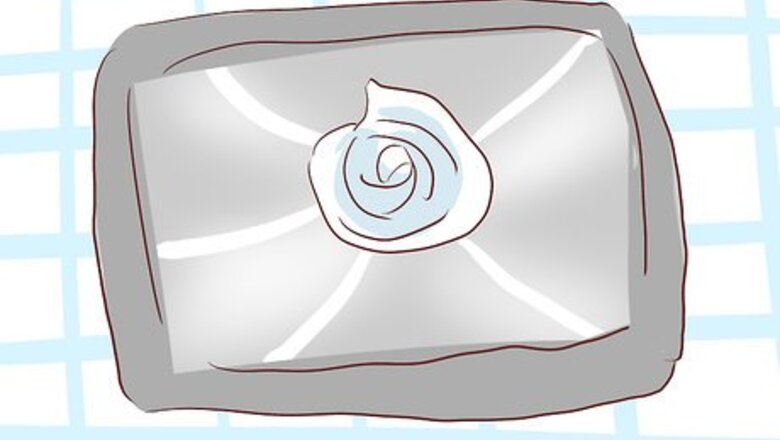
views
Preparing the Sink and Your Cat
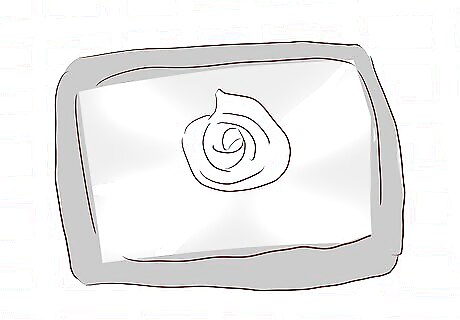
Prepare the sink area. A kitchen sink is an ideal spot to wash your cat because it is a good height to work at without straining your back. It also has surfaces to either side on which to put your supplies. Place a dry towel over the drain. Fill the sink with 6 to 10 inches (15.2 to 25.4 cm) of warm water. The temperature should feel pleasantly warm when you dip your elbow in. Make sure the room is also warm so your cat doesn’t get cold when it gets out of the bath.
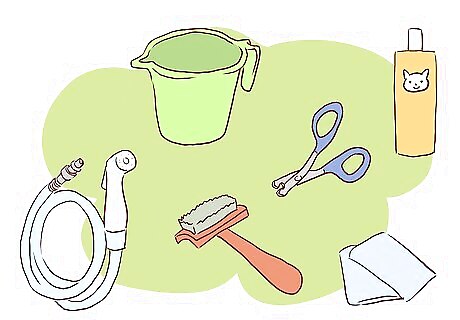
Gather all the supplies you will need. Getting all your supplies together will make giving your cat a bath much easier, particularly if you have a fussy cat who doesn't enjoy bath time. The supplies you will need include: A plastic jug to pour water. A hose attachment for the faucets. Cat shampoo. Nail clippers. Several dry towels. Hairdryer (optional). Brush. Cotton balls.
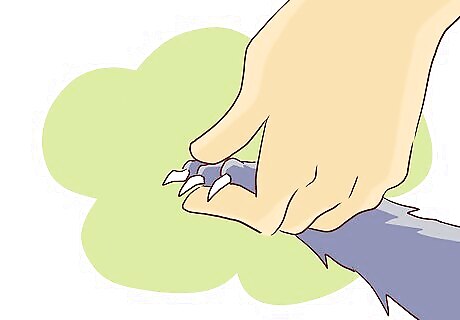
Extend your cat’s claws to make them easier to trim. It is a good idea to cut your cat’s claws before your commence bath time. Not only might you forget to do this later, but if she does panic during the bath you are less likely to get scratched. Use cat claw nail clippers, which can be purchased at your local pet store. To extend your cat’s nails: Place your cat on your knee, or on a work surface at a comfortable working height. Lift a paw. To extend a retracted claw, simply press gently on the last joint of the toe – this has the effect of extending the nail.
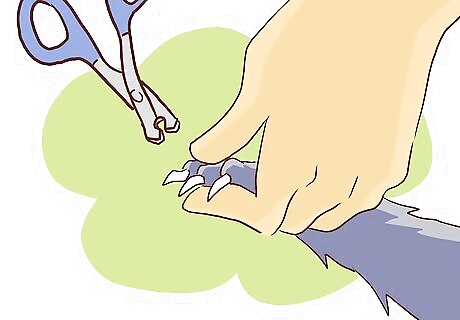
Do not cut the nail too far back. It is easiest to trim clear nails because you can see the living part of the quick (nail) through the translucent keratin. Clip away the sharp hook only; doing this will leave the chunky, triangular part of the nail still attached to the toe. Do not attempt to trim back as far as the toe or you will cut into the sensitive tissue of the quick that contains nerves and blood vessels. Trim each nail in turn. Most cats have five toes on each front paw and four toes on each back foot.
Washing Your Cat

Speak reassuringly as you lower your cat into the water. If she starts to panic, grasping her scruff may help to reassure her since doing this has a naturally subduing effect on cats. Stay calm and speak softly at all times because you cat will take her cues from you and if you are stressed, she’ll be stressed too.

Let your cat settle into the bathtub before you begin washing her. Allow her to settle and become used to the feel of warm water against her legs and belly. You may need to gently restrain her by holding her shoulders, to stop her jumping straight out of the tub.

Rinse her fur with water. Once she relaxes, use your hand to drizzle water over her back and shoulders. As she starts to accept this, you can pick up the jug and use this as a scoop to thoroughly wet her coat. Don’t forget to soak her neck and brisket areas. Take care not to get water in her ears or eyes. In theory, putting cotton wool in her ears should work to stop water from entering her ear canals, but cats are likely to shake the cotton straight out so doing this is likely to be a waste of time.

Decide whether or not you are going to shampoo your cat. With an indoor cat, it is not always necessary to use a shampoo since her coat is unlikely to be heavily soiled. Simply rinsing her with water should do the trick. However, for show cats or those who roam, use a shampoo specifically designed for cats. Ideally, choose a shampoo that is not perfumed (because cat skin is very sensitive) and does not contain insecticides (which are potentially irritant.)

Lather the shampoo into your cat’s coat. Pour a small amount of shampoo into your palm. Dip the fingers of the opposite hand into the shampoo in order to apply small volumes evenly all over your cat. Once you have applied all the shampoo, use your fingertips to massage it into the wet coat and raise a lather. Once again, don’t forget to work around your cat’s neck, throat and brisket areas, but avoiding getting shampoo into her ears or eyes.
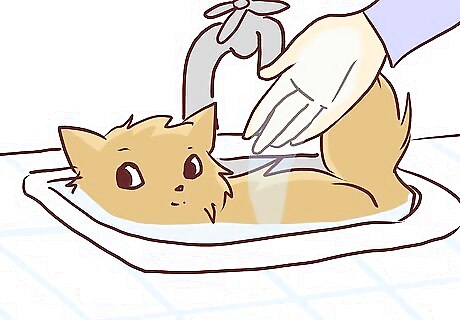
Rinse the shampoo out of your cat’s fur. Scoop up water from the sink with the jug you have been using. Hold the jug close to your cat and pour a steady stream over her skin and fur. Repeat this multiple times until your cat’s coat appears lather free.

Give your cat’s hair a final rinse with the sink faucet. Move the cat to one side of the sink. Remove the plug to let the soiled water drain away. Pick up the shower attachment and turn on the faucets to a low to moderate flow of water. The water’s temperature should be pleasantly warm. Run the water over your cat’s fur until the water coming out of her fur is clear.
Adding the Finishing Touches

Towel-dry your cat. Using both hands, lift your cat from the sink and place her on a towel so that she doesn’t drip everywhere. Cover her with another towel, making sure not to cover her head. Gently rub the towel against her wet fur to remove excess moisture. If the towel gets too wet and isn’t really drying her anymore, use a new towel to continue the drying process.
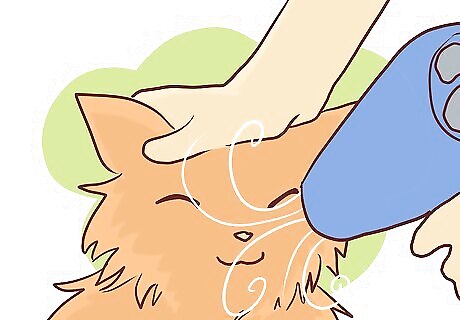
Use a hairdryer to speed dry your cat if you are in a rush. If you decide to use a hair dryer, set it to the lowest air speed and on the first heat seating. If the air is blasted too fast, your cat is more likely to flee, and high heat settings can inadvertently burn your cat’s delicate skin. Hold the dryer at least 12 inches (30.5 cm) away, and dry small sections of fur at a time. For added volume in show cats, brush both with, and against, the direction of the lie of the coat in order to ‘fluff’ it up. Continue in this way until the coat is dried to your satisfaction. Keep in mind that hair dryers can have an effect on your cat’s coat. The plus side is that you can add volume to the coat, but the minus is that it sometimes makes for more fluff and less gloss.

Clean your cat’s eyes and ears with a cotton pad. Place your cat on a clean, dry surface. Pour some cooled, boiled (boiling sterilizes the water) water onto a cotton pad and wipe her face. Start with the eyes and wipe outwards, removing any dried discharges or sleep from the corners of her eyes and nose. Use a clean piece of cotton for each eye, to avoid transfer of any bacteria. Using more dry cotton pads, wipe out any moisture that might have accidentally splashed into your cat’s ears.

Give your cat’s coat a final brush when she is all dry. Go over your cat’s fur with a wide-toothed comb. Follow the direction of your cat’s fur to make it smooth and shiny. Finish with a final groom with a bristle brush, again following the lie of the coat. Doing this will help to add that final gloss that will wow the judges at any cat show.


















Comments
0 comment